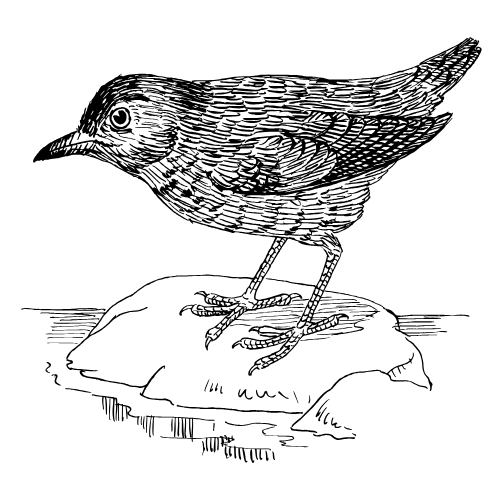It Never Asks a Crumb
My father died in February of 1996 and the days, weeks and months that followed were times of intense despair for me.
My father and I were very close. We were more like best friends than father and son. His death changed my day-to-day life completely and I didn’t know what to do. I felt helpless and hopeless.
On one of those darkest days, when the feeling of despair was at its peak, I happened to pick up one of my poetry books and began leafing through it. I wasn’t looking for anything in particular. I love books and I often pick up a a book just to look through it.
As I was thumbing through this poetry book, I was struck by the title of one of the poems and it immediately stopped my browsing. It was “Hope is the Thing with Feathers” by Emily Dickinson.
“A poem about hope,” I thought. “Just what I need right now.”
Emily Dickinson was not one of my favorite poets. I read her poetry in high school and college when it was assigned. But I always thought of her as that lonely old spinster sitting alone in some big house in one of those far off New England states. I never considered her in the same league with my favorites: William Wordsworth, William Butler Yeats, William Shakespeare, and John Keats.
But on this day, when I needed hope the most, I read Emily Dickinson’s poem. It said:

“May God, the source of your hope, fill you with all joy and peace by means of your faith in him, so that your hope will continue to grow by the power of the Holy Spirit.”
Romans 15: 13
“Hope is the thing with feathers
That perches in the soul,
And sings the tune--without the words,
And never stops at all,
And sweetest in the gale is heard;
And sore must be the storm
That could abash the little bird
That kept so many warm.
I've heard it in the chillest land,
And on the strangest sea;
Yet, never, in extremity,
It asked a crumb of me.”
I read it again and again. I remember having chills as Dickinson said the exact words that I needed to hear at that moment of my life.
Dickinson had described “hope” as a living entity, something real, not just some abstract term. Hope “perches in the soul” and “never stops at all.” It is sweetest in the stormiest of times and it has kept so many warm. And, the greatest thing about hope is that it never asks us for anything. “Yet, never…It asked a crumb of me.”
I felt hopeless on that day before I read that poem. But I took Dickinson’s words to heart.
When I closed that book up I found myself smiling. I felt hope. I also wondered what led me to that specific poem on that darkest of days. Was it the Holy Spirit at work, guiding me, helping me, sending me to Dickinson to hear the words I needed to hear?
There have been several times in my life when I have felt the power of the Holy Spirit. But I have never felt the Holy Spirit more than on that day, the day that I learned about hope in a very different way.
To this day, when I am sad and depressed and feel hopeless, I think about that day when I first read “Hope is the Thing with Feathers.” I think about hope and how, as Dickinson described, it is always with us. It perches in the soul and it never asks a crumb.
“Let your hope keep you joyful, be patient in your troubles, and pray at all times.”
Romans 12:12



